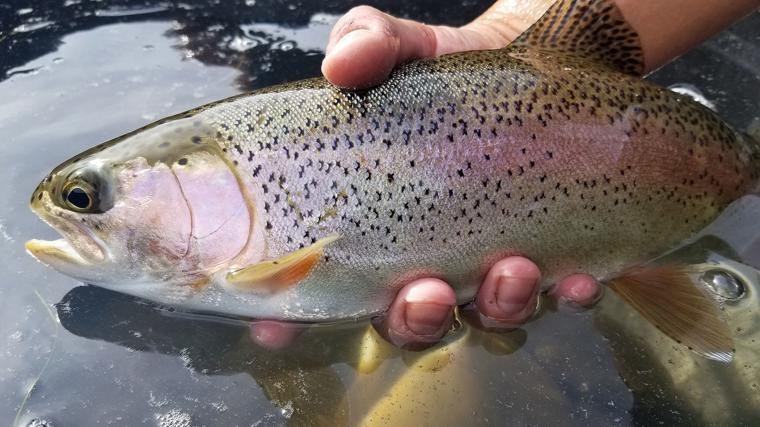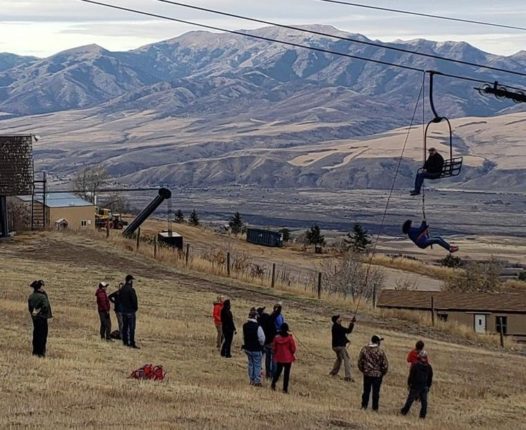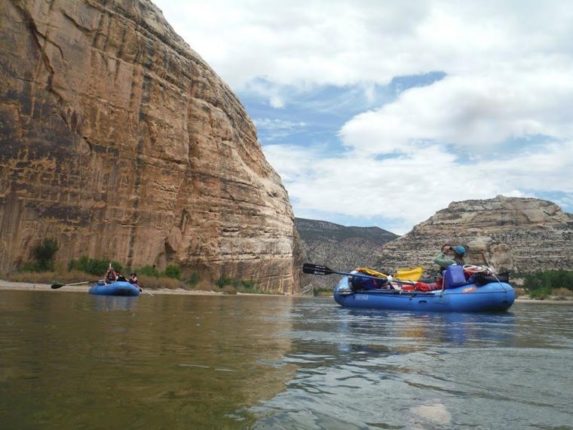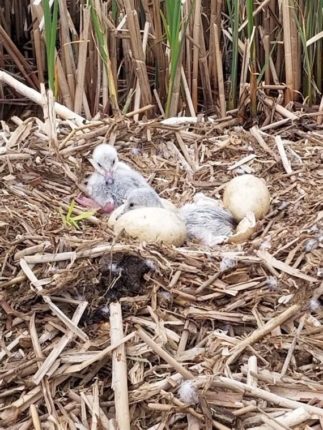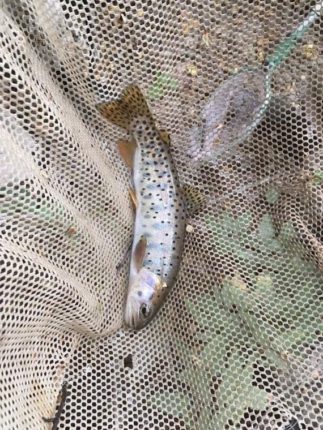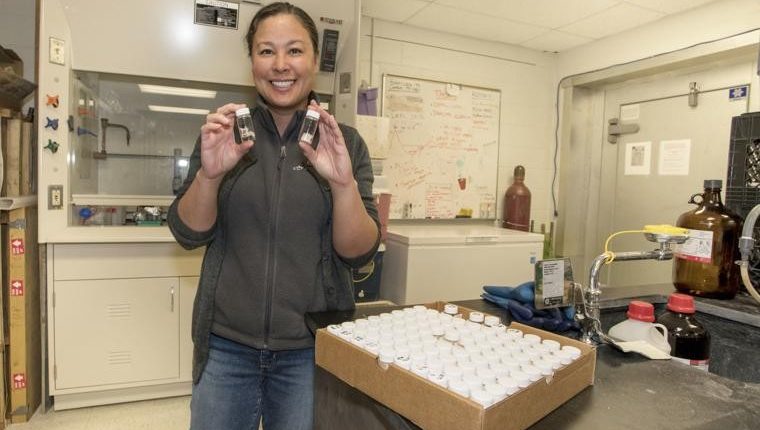POCATELLO — A gripping tale of a kayak voyage across the Pacific. A consummate biography of the great conservationist George Bird Grinnell. A thought-provoking work of natural history that takes readers deep under the earth. These and more are among the winners of 2019 National Outdoor Books.
A total of 19 books were chosen as winners in this year’s contest, which is now in its 23rd year. Sponsors of the program include the National Outdoor Book Awards Foundation, Idaho State University and the Association of Outdoor Recreation and Education.
Awards are presented in 10, often highly competitive, categories.
One of those categories is outdoor literature, and the winner of that category is “The Pacific Alone.” Written by Dave Shively, it is the story of kayaker Ed Gillet’s audacious attempt to cross the Pacific Ocean from California to Hawaii.
“This is truly a great adventure and an absorbing story,” said Ron Watters, the chairman of the National Outdoor Book Awards. “You’ll be there every paddle stroke of the way while Gillet in his small, confined craft takes on the limitless expanse of the Pacific.”
The competition among outdoor literature entrants was so intense this year that the judges chose “Inner Ranges” as a second winner. The book is by Geoff Powter and is a collection of Powter’s writings over the years.
“For years, Powter has puzzled over what it is that motivates climbers and mountain explorers,” said Watters. “That in itself makes for fascinating reading, but what sets the book apart from others is Powter’s day job. He’s a practicing clinical psychologist which adds a unique approach to his thoughts about those who are drawn to risk and adventure.”
The judges were unanimous in their choice of the winner of the natural history literature category, giving the award to “Underland: A Deep Time Journey.” Written by Robert Macfarlane, the book is an exploration of hidden worlds: fungal networks in which trees communicate, caves where the ancients left their art, catacombs of the dead and a melting Greenland glacier into which Macfarlane descends and is pummeled by water rushing down from above.
Valerie Cunningham, a natural history category judge from Minneapolis, calls Macfarlane’s writing “vivid and soulful.” “This is,” said Cunningham, “natural history writing at its very best.”
The judges of the history/biography category also selected two winners. One is a biography of the conservationist George Bird Grinnell, and the other is about Wes Skiles, a legendary scuba diver.
The Grinnell biography entitled “Grinnell: America’s Environmental Pioneer” is by John Taliaferro. Taliaferro is the author of several other highly acclaimed biographies, and that experience and skills as a writer came to bear in creating, according to the judges, a “monumental” piece of work about Grinnell.
“Of the giants of the conservation movement, Grinnell has been the least recognized,” said James Moss, an outdoor industry attorney and judge in the biography category. “His work and accomplishments a century ago continue to influence environmental policies to this day.”
Julie Hauserma’s “Drawn to the Deep” also received top honors in the history/biography category. Wes Skiles, a scuba diver and the subject of Hauserman’s book, was known for his exploratory cave dives and innovative underwater photographic work.
“Julie Hauserman’s book is a great read and a wonderful tribute to Skiles,” said Watters, “You’ll find yourself engrossed in the story as she takes you into that hauntingly beautiful underworld that Skiles inhabited.”
The winner of the nature and environment category is a book by Krista Schlyer titled “River of Redemption.” In it, Schlyer writes about Washington, D.C.’s Anacostia River. It’s a river that has been exploited and abused, but Schlyer nevertheless finds isolated havens of beauty.
John Miles, a judge and former dean and professor of Environmental Studies at Western Washington University said, “River of Redemption is a cautionary tale of the dangers facing rivers, but it’s also a hopeful book in that through continued efforts of restoration, the river may one day regain its environmental health.”
Complete reviews of these and the other 2019 winners may be found at the National Outdoor Book Awards website at www.noba-web.org.
Here is a list of winners.
— Outdoor literature. Winner. “The Pacific Alone: The Untold Story of Kayaking’s Boldest Voyage.” By Dave Shively. Falcon, Guilford, Conn. ISBN 9781493026814
— Outdoor literature. Winner. “Inner Ranges: An Anthology of Mountain Thoughts.” By Geoff Powter. Rocky Mountain Books, Victoria, British Columbia. ISBN9781771602877
— Outdoor literature. Honorable mention. “The Salt Path.” By Raynor Winn. Penguin Books, New York. ISBN9780143134114
— History/biography. Winner. “Grinnell: America’s Environmental Pioneer and his Restless Drive to Save the West.” By John Taliaferro. Liveright Publishing, New York. ISBN 9781631490132
— History/biography. Winner. “Drawn to the Deep: The Remarkable Underwater Explorations of Wes Skiles.” By Julie Hauserman. University Press of Florida, Gainesville. ISBN 9780813056982
— Nature and the environment. Winner. “River of Redemption: Almanac of Life on the Anacostia.” By Krista Schlyer. Texas A&M University Press. College Station, Texas. ISBN 9781623496920
— Natural history literature. Winner. “Underland: A Deep Time Journey.” By Robert Macfarlane. W. W. Norton, New York. ISBN 9780393242140
— Natural history literature. Honorable mention. “The Secret Wisdom of Nature: Trees, Animals, and the Extraordinary Balance of All Living Things.” By Peter Wohlleben. Greystone Books, Vancouver. ISBN 9781771643887
— Natural history literature. Honorable mention. “This Land: How Cowboys, Capitalism, and Corruption are Ruining the American West.” By Christopher Ketcham. Viking, New York. ISBN 9780735220980
— Design & artistic merit. Winner. “The Grand Canyon: Between River and Rim.” Photographs and Text by Pete McBride. Design by Susi Oberhelman. Rizzoli International Publications, New York. ISBN 9780847863044
— Children’s category. Winner. “101 Outdoor Adventures to Have Before You Grow Up.” By Stacy and Jack Tornio. Falcon Guides. Lanham, Md. ISBN 9781493041404
— Children’s category. Winner. “Wildheart: The Daring Adventures of John Muir.” By Julie Bertagna. Illustrated by William Goldsmith. Yosemite Conservancy, El Portal, Calif. ISBN 9781930238947
— Children’s category. Honorable mention. “The Lost Forest.” By Phyllis Root. Illustrations by Betsy Bowen. University of Minnesota Press. Minneapolis. ISBN 9780816697960
— Outdoor classic. Winner. “Mammal Tracks and Sign: A Guide to North American Species.” By Mark Elbroch and Casey McFarland. Stackpole Books, Guilford, Conn. ISBN 9780811737746
— Instructional. Winner. “Training for the Uphill Athlete: A Manual for Mountain Runners and Ski Mountaineers.” By Steve House, Scott Johnston and Kilian Jornet. Patagonia Books, Ventura, Calif. ISBN 9781938340840
— Nature guidebooks. Winner. “Field Guide to the Flower Flies of Northeastern North America.” By Jeffrey H. Skevington and Michelle M. Locke. Princeton University Press, Princeton, N.J. ISBN9780691189406
— Nature guidebooks. Winner. “Wildflowers of the Atlantic Southeast.” By Laura Cotterman, Damon Waitt and Alan Weakley. Timber Press, Portland, Ore. ISBN 9781604697605
— Outdoor adventure guides. Winner. “Sierra Summits: A Guide to Fifty Peak Experiences in California’s Range of Light.” By Matt Johanson. Falcon Guides. Guilford, Conn. ISBN 9781493036448
— Outdoor adventure guides. Honorable mention. “150 Nature Hot Spots in California: The Best Parks, Conservation Areas and Wild Places.” By Ann Marie Brown. Firefly Books. Richmond Hill, Ontario. ISBN 9780228101680
